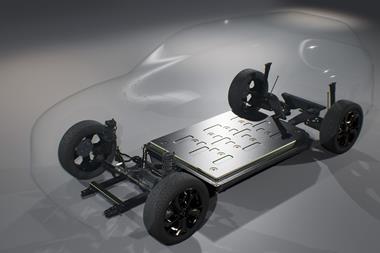 I’m happy to admit the subject of lightweighting fascinates me, which is a good job since it crops up in almost every item that covers the future of vehicle manufacturing. Being something of a factory ‘geek’ I’m really looking forward to some plant visits to see how this challenge is being met in mass production. So I was very happy when the story on the BMW i3 dropped into my lap.
I’m happy to admit the subject of lightweighting fascinates me, which is a good job since it crops up in almost every item that covers the future of vehicle manufacturing. Being something of a factory ‘geek’ I’m really looking forward to some plant visits to see how this challenge is being met in mass production. So I was very happy when the story on the BMW i3 dropped into my lap.
Electric vehicles and lightweight design go hand-in-hand and manufacturers in this segment are tackling two major technology challenges (vehicle weight and range). Although there are a number of mass produced, pure electric vehicles on the market, the i3 struck me as a design that is getting serious about the whole idea of electric transport. I’m not diminishing the EVs preceding the i3, it’s just that BMW has taken on an array of challenges to produce this model; challenges that individually are daunting.
The technology for lightweighting vehicles (materials and production processes) has been around for some time, most visibly employed in motorsport applications. The trickle-down effect is seen in the use of lightweight alloys and composite materials in the construction of exotic (road-going) supercars, but the common denominator has been the very low volume of vehicle production. This allows the manufacturers the rare luxury of time to use complex forming and joining methods. BMW has no such luxury in producing the i3; this uses a complete carbon fibre body structure in a mass produced model. BMW is being somewhat vague about actual production figures, but it is clearly preparing for a serious production run and aiming to capture a large percentage of the EV market. The German car-maker has made a significant commitment to this project and in doing so has achieved some notable breakthroughs in its production processes. As I said earlier, in my opinion this is a seriously important vehicle.
This achievement goes beyond producing a viable high-volume electric car. It has revealed some additional benefits for energy consumption and waste management in the production process.
Another lightweight special that caught my eye is the 2014 Corvette, as discussed by GM’s manufacturing chief for body manufacturing engineering product interface, Michael Regiec, at our recent conference in Detroit. While GM perhaps took a more conventional manufacturing route, the challenges were no less daunting or numerous. The Corvette’s very lightweight structure uses a combination of materials neccesitating up to six different joining methods. Regiec admitted that some innovative thinking was required to incorporate so many different processes on a single line, to produce one model, raising the question: how can ultra-lightweight, hi-tech vehicles be accommodated in a production environment that sees a growing need for mixed model lines and increased flexibility?


































